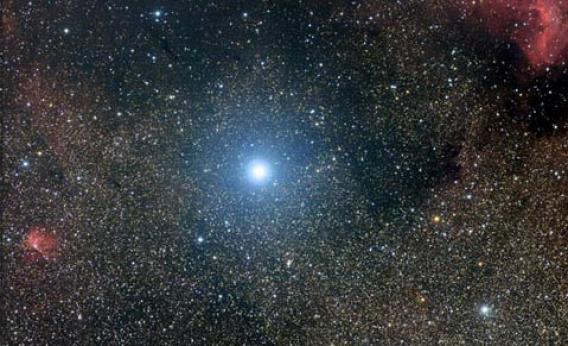Create a free profile to get unlimited access to exclusive videos, sweepstakes, and more!
The Summer Triangle ... Up Close

If you go outside after sunset—and can tear your eyes off of the spectacle of Venus and Jupiter slowly merging in the west—turn around and look to the east. Not long after the sky gets good and dark, you’ll see a trio of bright stars not far above the horizon. Day by day, as summer shambles on,* these stars will be higher in the sky, seemingly strengthening as the season does as well.
This is the iconic Summer Triangle, made up of three of the brightest stars in the sky: Vega, Deneb, and Altair. Straddling the Milky Way, to thousands of amateur astronomers the trio is a sure sign of the season.
I’ve seen countless wide-angle shots of them, placing them in context in the sky, but master astrophotographer Rogelio Bernal Andreo has done something different; he's taken close-ups of each stars, to show what they look like as individuals:
WOW.
All three are interesting stars. Altair is the brightest star in the constellation Aquila, the eagle. It has a bit less than twice the mass of the Sun, is more than 10 times more luminous, and is located about 17 light-years away, making it one of the closest stars you can see with your naked eye. Its brightness is mostly due to its proximity; while it’s physically brighter than the Sun, from a hundred light-years away you’d barely notice it.
Vega, in the constellation Lyra, the lyre, is somewhat more massive than Altair, but nearly four times as luminous. Even though it’s 25 light-years away, it appears to be a bit brighter than its neighbor. If the name is familiar, try watching the movie (or reading the book!) Contact, by Carl Sagan. In the 1980s, Vega was found to be putting out more infrared light than expected for a star of its kind, and this is due to a vast disk of debris circling the star, possibly due to the collision of comet-like bodies orbiting it. This material is what’s emitting the infrared, and in fact many such disks have been found around other stars.
Deneb, though, is the bruiser of the three. The brightest star in Cygnus, the swan (also called the Northern Cross), it’s a monster. It has 20 times the mass of the Sun, and blasts out light at 200,000 times the rate the Sun does! It’s so massive it will one day become a supernova. At 2,500 light-years away, though, there’s not much to worry about. Even if it doesn’t explode in a million years, it’ll still be too far away to hurt us. But it’ll be about as bright as the Moon in the sky!
Incredible, though, that even though it’s 100 times as far as Vega, it’s only a tad dimmer. It really is a brute. In fact, it’s one of the most distant stars you can see with your naked eye, contrasting wonderfully with nearby Altair. If Deneb were as close as Altair, it would shine so brightly you could read by it!
Look at all the stars surrounding the Big Three in Andreo’s photo, though. Each of those is a sun, each with its own particular uniqueness, its own history. The vast majority of them are likely to have planets too … and even then these are just a tiny fraction of the hundreds of billions of stars in the galaxy.
The sky is filled with stars, planets … and stories. Science helps us read them.
*For Northern Hemisphere observers, that is. The vast majority of people on Earth live near the 40° north latitude line, and for them the stars are highest in August around 10:00 at night local time. For southern observers, they’ll be low to the north in August.














